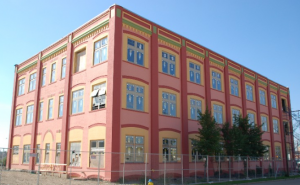 May is National Historic Preservation Month and we celebrate our nation’s most treasured assets. Historical sites and buildings serve as reminders of our heritage. Our past. These buildings are steeped with character and enrich our neighborhoods. As we are modernizing and moving our communities into the 21st century, steps are being take to restore and rejuvenate the charm of our past.
May is National Historic Preservation Month and we celebrate our nation’s most treasured assets. Historical sites and buildings serve as reminders of our heritage. Our past. These buildings are steeped with character and enrich our neighborhoods. As we are modernizing and moving our communities into the 21st century, steps are being take to restore and rejuvenate the charm of our past.
Understanding our past and creating charming neighborhoods isn’t the only reason to preserve these buildings. Building owners not only have a connection to the site, but their bottom line can be bolstered by preserving these landmarks. Owners can save on construction costs by making use of these structures, instead of tearing them down to make room for sleek now models. By restoring the integrity of the structure, you are lessening the impact on the environment and enhancing the energy efficiency of the building. In addition to saving on construction costs and energy efficiency, there are multiple tax incentives available to those investing in the development and preservation of historic buildings. The Federal Historic Preservation Tax incentives program has leveraged over $69 billion in private investments to preserve over 39,000 properties since 1976.(1) There are multiple tax structures and preservation easements available to protect historic properties and aid in maintaining the integrity of our past.
If you chose to enhance your historical building, there are specific guidelines to follow. First you need to choose an appropriate treatment. Preservation, rehabilitation, restoration and reconstruction all sound alike, however, they vary based on the needs of the structure. The choice of treatment depends on the structure itself – it’s historic significance, integrity and its intended use.
Is your building registered as a National Historic Landmark? The National Registrar typically warrants Preservation or Restoration. Those not listed typically undergo more significant rehabilitation.
What condition is your structure in? Has it had prior work? In order to preserve the natural state of the building, original features need to remain essentially intact. What purpose will this building serve? Will you be adapting it for a new purpose. You need to work within mandated code requirements, regardless of treatment.
Historical buildings are the fabric of our community. However you chose to preserve them, you are making an investment in the preservation of our history, our heritage and allowing the next generations to learn and experience our past.
To learn how Trisco Systems can help retain the history and heritage of your buildings, call 419-339-3906 or click here.
